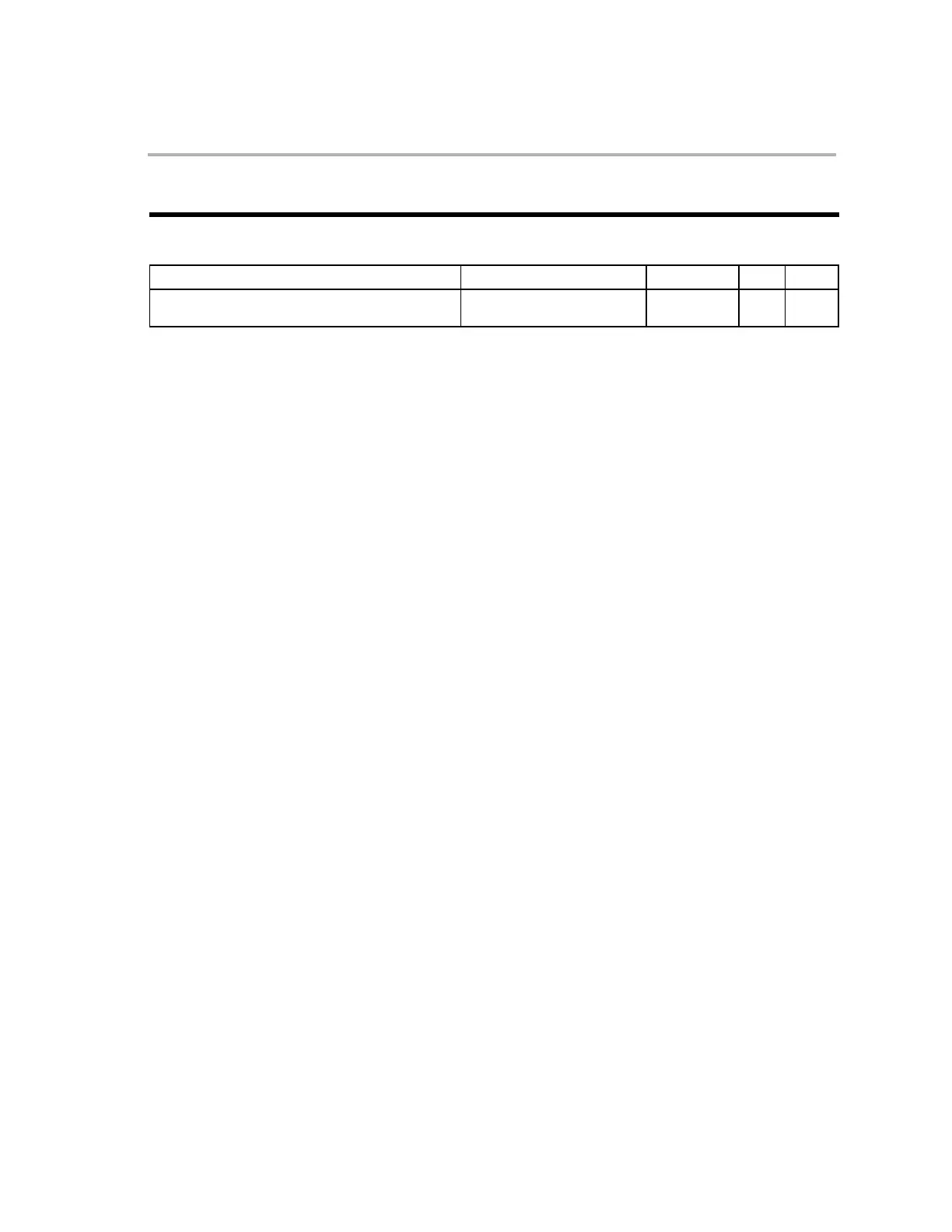CMP loc16,#16bit
6-75
CMP loc16,#16bitSigned Compare
SYNTAX OPTIONS OPCODE OBJMODE RPT CYC
CMP loc16,#16bitSigned 0001 1011 LLLL LLLL
CCCC CCCC CCCC CCCC
X − 1
Operands
loc16
Addressing mode (see Chapter 5)
#16bitSigned
16-bit immediate signed constant value
Description Compare the 16-bit contents of the location pointed to by the “loc16”
addressing mode to the signed 16-bit immediate constant value. To
perform the comparison, the result of ([loc16] − #16bitSigned ) is
evaluated and the status flag bits are set accordingly. The content of
“loc16” is left unchanged:
Modify flags on ([loc16] − 16bitSigned);
Smart Encoding:
If loc16 = AL or AH and #16bitSigned is an 8-bit number, then the
assembler will encode this instruction as CMPB AX, #8bit, to override
this encoding, use the CMPW AX, #16bitSigned instruction alias.
Flags and
Modes
N
If the result of the operation is negative, then N is set; otherwise it is
cleared. The CMP instruction assumes infinite precision when it deter-
mines the sign of the result. For example, consider the subtraction
0x8000 − 0x0001. If the precision were limited to 16 bits, the result
would cause an overflow to the positive number 0x7FFF and N would
be cleared. However, because the CMP instruction assumes infinite
precision, it would set N to indicate that 0x8000 − 0x0001 actually re-
sults in a negative number.
Z
The comparison is tested for a zero condition. The zero flag bit is set if
the operation ([loc16] − 16bitSigned ) = 0, otherwise it is cleared.
C
If the subtraction generates a borrow, then C is cleared; otherwise C is
set.
Repeat This instruction is not repeatable. If this instruction follows the RPT
instruction, it resets the repeat counter (RPTC) and executes only
once.
Note: The examples in this chapter assume that the device is already
operating in C28x Mode (OBJMODE = 1, AMODE = 0). To put the
device into C28x mode following a reset, you must first set the
OBJMODE bit in ST1 by executing the “C28OBJ” (or “SETC
OBJMODE”) instruction.

